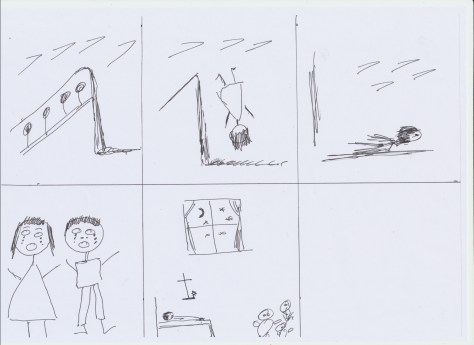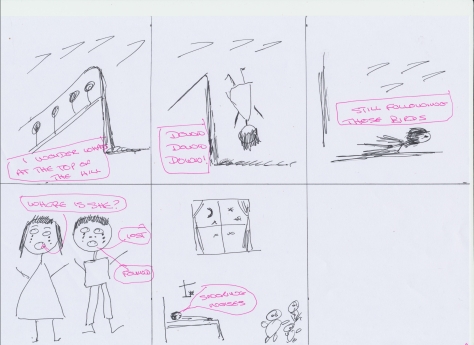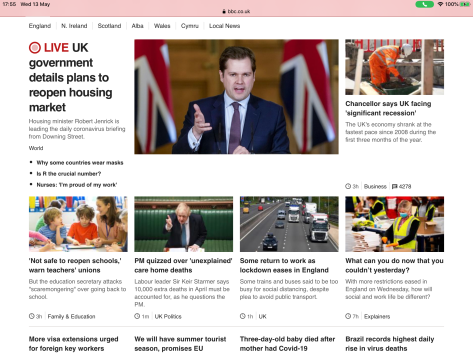The research point is to look at the Barthes essay Rhetoric of the Image and reflect on looking at his definitions of anchorage and relay, thinking about examples of these and considering how you could use them in your own work.
I will start by admitting that I find Barthes a complex read. This may be partly because he wrote in French and I am reading translations. It may be because his background is in philosophy and semiotics. I find I always have to have a dictionary to hand. I looked at the essay as a whole as the parts on anchorage and relay can only be understood in context.
All quotes are from the Rhetoric of the image – initially published in 1964, republished in Image Music Text in 1977 and obtained here from The Photography Reader (2019).
In the Rhetoric of the Image Barthes starts by saying that many people, especially linguists feel that images are weak communicators in comparison with language but other think that it is ‘ineffably rich’.
Barthes then looks at levels of messages in photographs. The first linguistic – and actual words such as a caption or labels within the image. These can have both denotational and connotational meanings. He then describes a clearly coded iconic message- the details of the image and what it shows (in this case the makings of soup) – the perceptual message or the denoted image. The third level he describes as a ‘message without a code’, a literal message that we understand because of our previous knowledge – the cultural message or the connoted, symbolic image.
He notes that linking of text and image is common. Does the image duplicate information in the words or does the text add ‘fresh information’ to a picture? He sees us (in 1964) as a civilisation of writing and speech rather than of images and notes that there is a linguistic message (length variable and irrelevant) with every image – title, caption, dialogue, accompanying article.
All images are polysemous (have multiple meanings). The reader chooses. The linguistic message is one way of fixing the message, resolving the (terror of) uncertainty. The text helps to identity the scene – what is it?
Anchorage – tells you what of all the possible denotive meanings is the one that you are supposed to understand – to focus not simply my gaze but also my understanding. It limits what you see. It directs you to the meaning that is desired (especially in advertising). Anchorage is a control, a selective explanation (elucidation). It acts to repress (cut down) the meaning of the image to that wished by the creator or society.
Relay (less common than anchorage) is often seen in cartoons/comics. ‘The text and image stand in a complimentary relationship’. The unity of the message becomes important rather than the individual items. He describes the information gained by the text as more ‘costly’ as it need more formal learning to acquire and the information from the image as ‘lazier’ and ‘quick’ allowing a hurried reader to avoid the necessity of verbal descriptions. He also notes that either text or image will usually be dominant.
Barthes then goes on to talk about the denoted image. He says that although a photograph, ‘by virtue of its absolutely analogue nature’ – is a message without a code – but also that everybody automatically understands more then the liberal image because of our cultural knowledge. However, a photograph is different from a drawing as any drawing chooses what to show, as opposed to a photograph which (once the frame has been decided) shows everything. The photograph records, evoking not only being-there but also having-been-there. There is always the evidence of this is how it was. It is different from any other form of image making (a mutation of a way of passing on information).
The connoted (symbolic image) is complex because there are as many possible interpretations as there are readers. The interpretation depends on prior knowledge, a ‘body of attitudes’. The language of the image consisted both utterances emitted by the creator and the utterances received from the viewer. Therefore, they may/will include surprises. The whole set of connotations from the image Barthes calls a rhetoric.
He ends by noting that the meaning (of an image) is torn internally between culture and nature – but the whole thing combines to tell a story.
In summary:
Barthes defines anchorage as the controlling words that direct the reader to what the creator wishes him/her to see. Relay in text is something that sits alongside the image and gives additional value, is complimentary. Anchorage directs you; relay suggests possibilities.
Examples:
- In the book Our Forbidden Land by Faye Godwin (Godwin, 1990) she uses a combination of both. The images are accompanied by a simple text such as ‘Stubble Burning, east Kent’ which, by itself, would allow you to look at the image and think ‘Oh. It must be winter’ or ‘That makes a lot of smoke’ – but she then accompanies the image with a passage of information about the context which makes it clear that she wants you to read it as an obnoxious and dangerous process.
- In The Ballad of Sexual Dependency by Nan Goldin she uses simple factual titles such as ‘Christie and Sandy on the beach, Provincetown, Mass.1976’ which’ while grounding the image in reality, this happened, I was then then – allows you to make up your own story.
- In Tal Uf Tal Ab by Robert Frank there is even less information, the name of the person or a place. You are left with your own interpretation.
- In a copy of the magazine Breathe (picked at random off the floor) -the images (while often very attractive) are clearly secondary to the anchoring text, for instance, a long article entitled ‘Food for the soul’ (Yates, 2016) which is accompanied by luscious looking strawberries, cherries and raspberries. This is very similar in use to the advertisement Barthes describes in Image of the Rhetoric, although here you are being sold a lifestyle rather than a specific product.
How might this help me?
In much of the work I do I want the reader/viewer to develop their own ideas. To Think. To feel. To imagine. But, equally, I do want to give some direction – I take images of people with disabilities. I do not want the viewer to be negative. I want them to go into their world not look from outside with contempt. I think I need to consider the relay type text, maybe a simple caption, a single word – but with an essay (possibly too formal) at some point.
I am thinking about a piece of memory work – maybe the words need to be totally separate. Single words in a grid? Minimal size captions on the alternate page?
References:
Frank, R. (2010) Tal Uf Tal Ab. Gottingen, Germany: Steidl.
Godwin, F. (1990) Our forbidden land. London: J. Cape.
Goldin, N. et al. (1986) The ballad of sexual dependency. New York, N.Y.: Aperture Foundation.
Wells, L. (2019) The photography reader: history and theory. Abingdon, Oxon; New York, Ny: Routledge.
Yates, J. (2016) ‘Food for the soul’ In: Breathe 2016 pp.74–75.
![IMG_7239[10625]](https://scottishzoeidentityandplace.blog/wp-content/uploads/2020/05/img_723910625.jpg?w=474)
![IMG_7241[10627]](https://scottishzoeidentityandplace.blog/wp-content/uploads/2020/05/img_724110627.jpg?w=474)

















